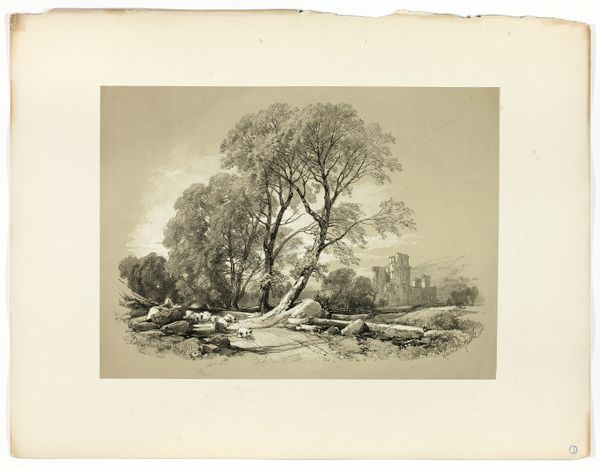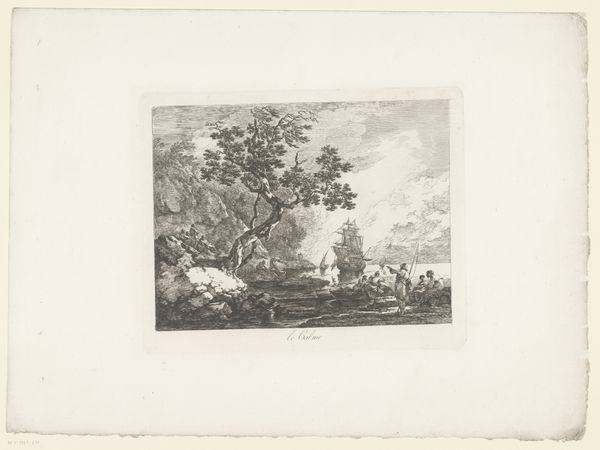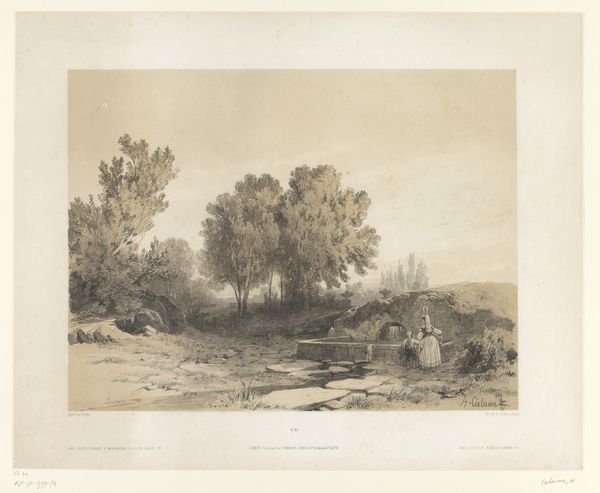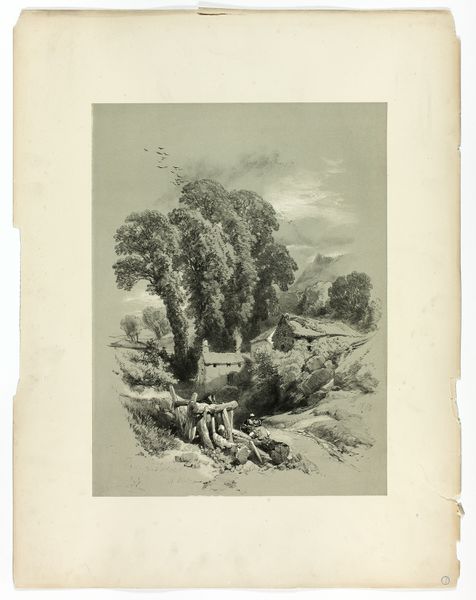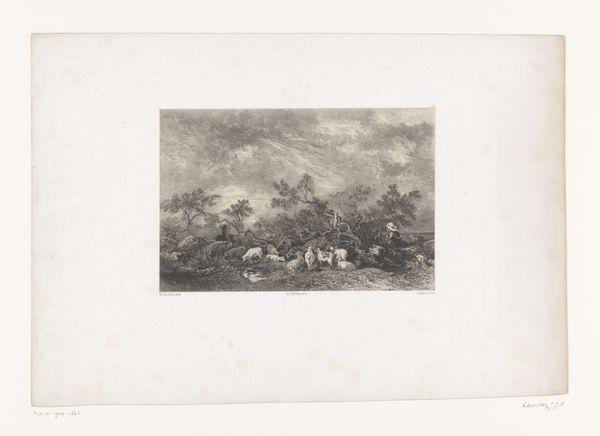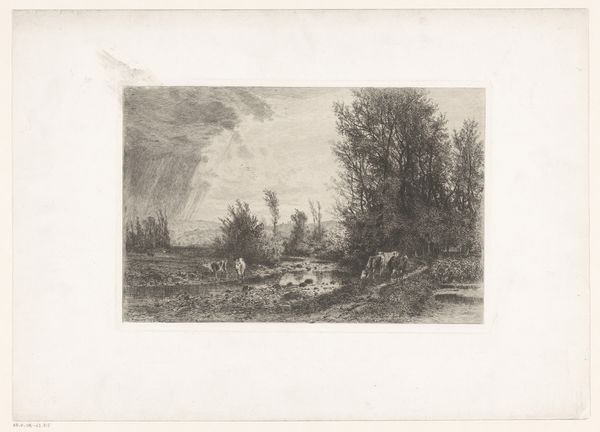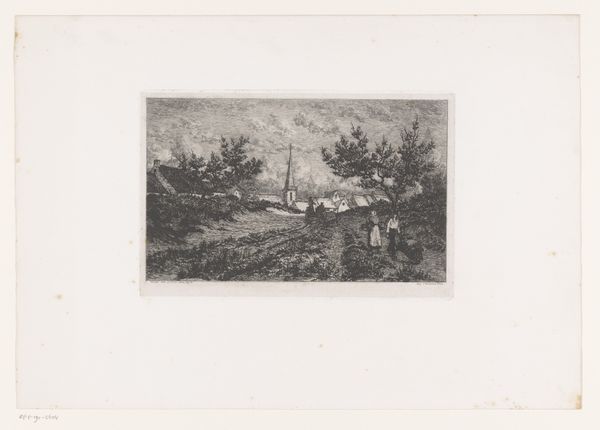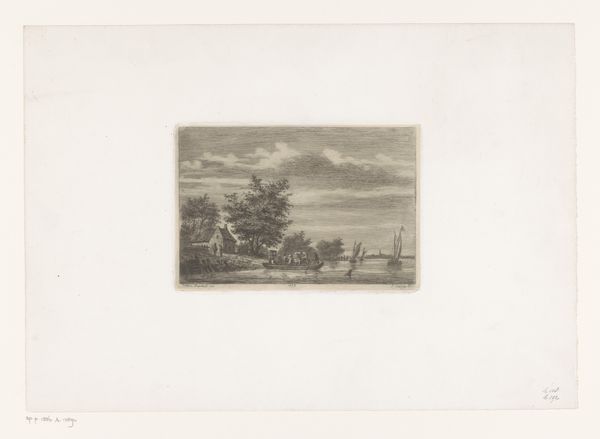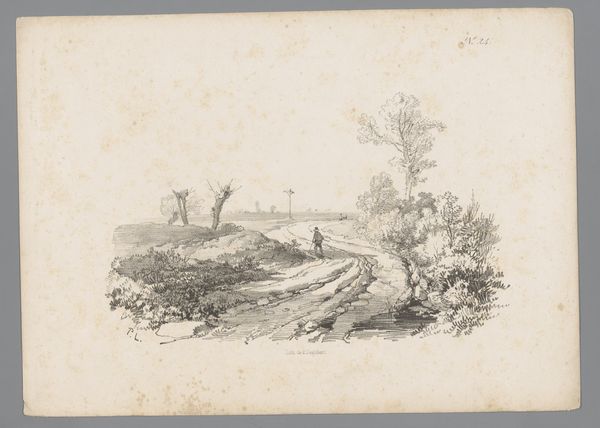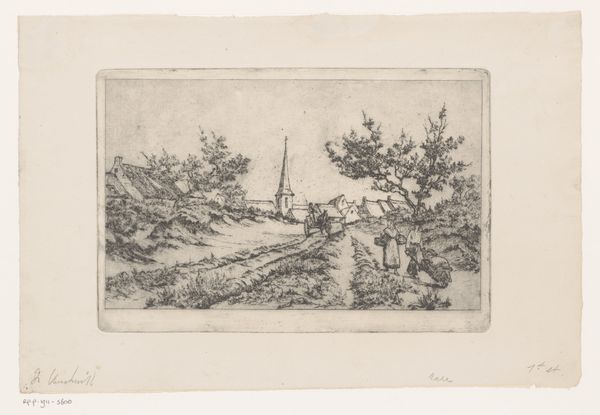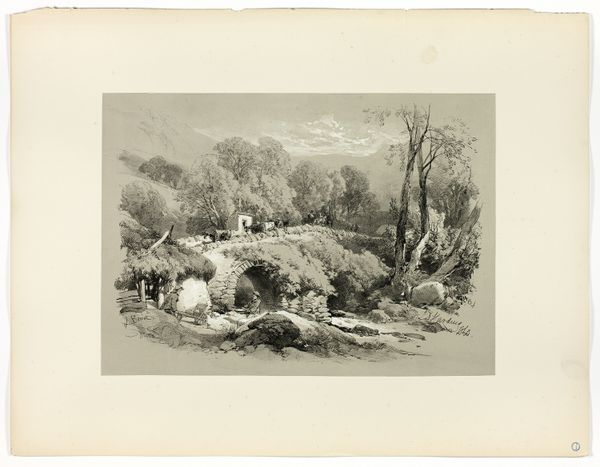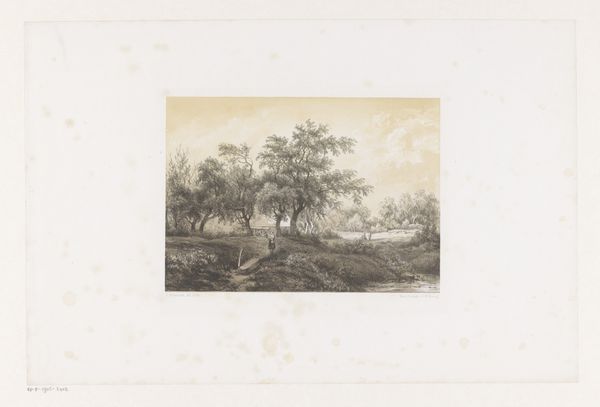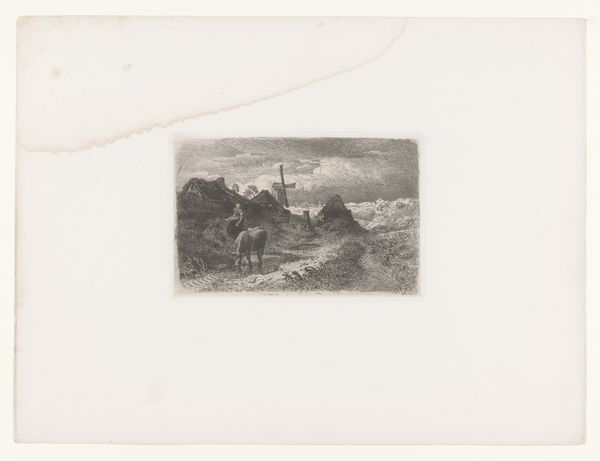
Tynemouth Castle, from Picturesque Selections 1860
0:00
0:00
Dimensions: 275 × 387 mm (image, primary support); 430 × 560 mm (secondary support)
Copyright: Public Domain
Editor: This is "Tynemouth Castle, from Picturesque Selections," a print made around 1860 by James Duffield Harding. The lithograph, etching and drawing on paper definitely capture the somewhat melancholic spirit of Romanticism, it seems a little gloomy but serene, perhaps? How do you interpret this work? Curator: What strikes me is the strategic placement of ruins against the castle. Those decayed logs in the foreground juxtapose with the distant, idealized castle. This arrangement seems very deliberate. The artist is playing with themes of time and memory. What emotions do you associate with ruins? Editor: Sadness, perhaps. They speak of something lost, some past glory now gone. Curator: Exactly. Ruins carry symbolic weight, representing the transient nature of power and beauty. Harding positions Tynemouth Castle in a specific visual language connected to Britain's cultural identity, wouldn't you say? A melancholic beauty. What's that stark post doing on the right side of the view? Editor: It almost looks like a broken cross. Curator: Indeed, which evokes an older set of memories connected to Tynemouth. The visual weight of religious structures. In effect, Harding weaves together nature and these visual ruins with our understanding of culture. What do you think that says? Editor: I see, there is both an acknowledgement of loss, and hope of rebirth. Very evocative! Curator: Absolutely, the romantic spirit seeks to find the Sublime even within scenes of decay. Thanks for spotting those nuances, the artist's strategic use of visual language clearly shaped the emotional impact!
Comments
No comments
Be the first to comment and join the conversation on the ultimate creative platform.
